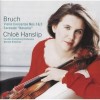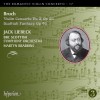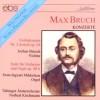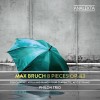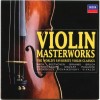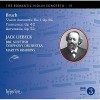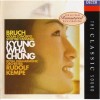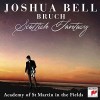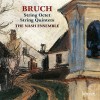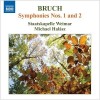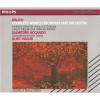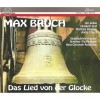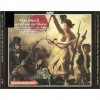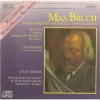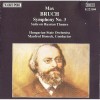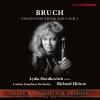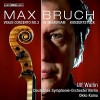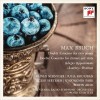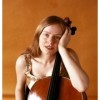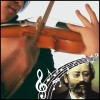| Country: | Germany |
| Period: | Romantique |
Biography
Life
Bruch was born in Cologne, Rhine Province, where he received his early musical training under the composer and pianist Ferdinand Hiller, to whom Robert Schumann dedicated his piano concerto. Ignaz Moscheles recognized his aptitude. He had a long career as a teacher, conductor and composer, moving among musical posts in Germany: Mannheim (1862-1864), Koblenz (1865-1867), Sondershausen, (1867-1870) Berlin (1870-1872), and Bonn, where he spent 1873-78 working privately. At the height of his reputation he spent three seasons as conductor of the Liverpool Philharmonic Society (1880-83). He taught composition at the Berlin Hochschule für Musik from 1890 until his retirement in 1910. Bruch died in his house in Berlin-Friedenau.
Works
His conservatively structured works, in the German romantic musical tradition, placed him in the camp of Romantic classicism exemplified by Johannes Brahms, rather than the opposing "New Music" of Franz Liszt and Richard Wagner. In his time, he was known primarily as a choral composer.
His Violin Concerto No. 1 in G minor, Op. 26 (1866) is one of the most popular Romantic violin concertos. It uses several techniques from Felix Mendelssohn's Violin Concerto in E minor. These include the linking of movements, and a departure from the customary orchestral exposition and rigid form of earlier concertos. It is a singularly melodic composition which many critics have said represents the apex of the romantic tradition.
Other pieces which are also well-known and widely played include the Scottish Fantasy for violin and orchestra which includes an arrangement of the tune "Hey Tuttie Tatie", best known for its use of the song Scots Wha Hae by Robert Burns. Bruch also wrote Kol Nidrei, Op. 47, a popular work for cello and orchestra (its subtitle is "Adagio on Hebrew Melodies for Violoncello and Orchestra"). This piece was based on Hebrew melodies, principally the melody of the Kol Nidre incantation from the Jewish Yom Kippur service, which gives the piece its name. The success of this work has made many assume that Bruch himself had Jewish ancestry, but there is no evidence for this. Indeed under the National Socialist Party his music ceased to be programmed because of the possibility of his being a Jew, and in German speaking countries his music was completely forgotten.
He wrote the Concerto in A flat minor for Two Pianos and Orchestra, Op. 88a, in 1912 for the American duo-pianists Rose and Ottilie Sutro, but they never played the original version; they only ever played the work twice, in two different versions of their own. The score was withdrawn in 1917 and discovered only after Ottilie Sutro's death in 1970. The Sutro sisters also had a major part to play in the fate of the manuscript of the Violin Concerto No. 1. Bruch sent it to them to be sold in the United States, but they kept it and sold it for profit themselves.
Other works include two other concerti for violin and orchestra (which Bruch himself regarded as at least as fine as the famous first); and a Concerto for Viola, Clarinet and Orchestra. There are also 3 symphonies, which, while not displaying any originality in form or structure, nevertheless show Bruch at his best as a composer of fine melodic talent and a gift for orchestration, firmly in the tradition of the Romantics. He wrote a number of chamber works, including a set of eight pieces for piano, clarinet, and viola; and a string octet.
The violinists Joseph Joachim and Willy Hess advised Bruch on composing for strings, and Hess performed the premieres of a number of works by Bruch, including the Concert Piece for Violin and Orchestra, Op. 84, which was composed for him.







![Russian legends - David Oistrakh [20 CD]](http://static.classicalm.com/repository/collection-cover/small/267-img1318418713553266.jpg)
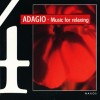
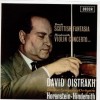
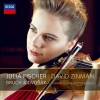
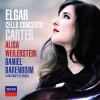
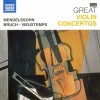
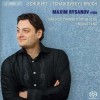
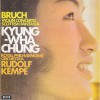
![Pablo Casals - The Complete Published EMI Recordings (1926 - 1955) [CD5of9]](http://static.classicalm.com/repository/disk-cover/small/3590-img1404554306267644.jpg)
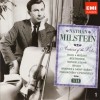
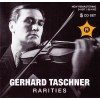
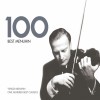
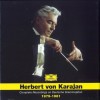
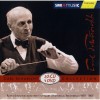
![Arthur Grumiaux - Philips Recordings 1955-1978 [CD 5 of 6]](http://static.classicalm.com/repository/disk-cover/small/3381-img1392035974793367.jpg)
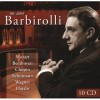
![Arthur Grumiaux - Philips Recordings 1955-1978 [CD 6 of 6]](http://static.classicalm.com/repository/disk-cover/small/3382-img1392037041781585.jpg)
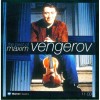
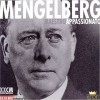
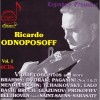
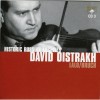
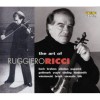

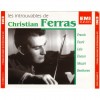
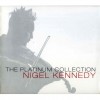
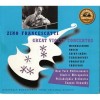
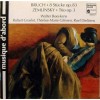
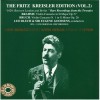
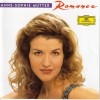
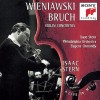
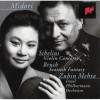
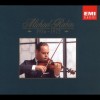
![The Great Violin Concertos (Menuhin Yehudi) [CD 3 of 3]](http://static.classicalm.com/repository/disk-cover/small/3061-img1375715798706183.jpg)
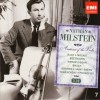
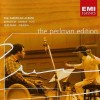
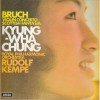
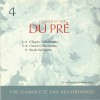
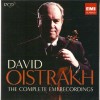
![The Heifetz Collection, Volume 8 [2 CD]](http://static.classicalm.com/repository/disk-cover/small/929-img1316982090166364.jpg)
![The Heifetz Collection, Volumes 11 - 15 [5 CD]](http://static.classicalm.com/repository/disk-cover/small/939-img1317071875601277.jpg)
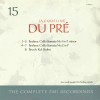
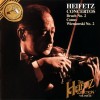
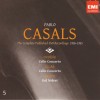
![The Heifetz Collection, Volume 6 [2 CD]](http://static.classicalm.com/repository/disk-cover/small/725-img1315427995644122.jpg)

